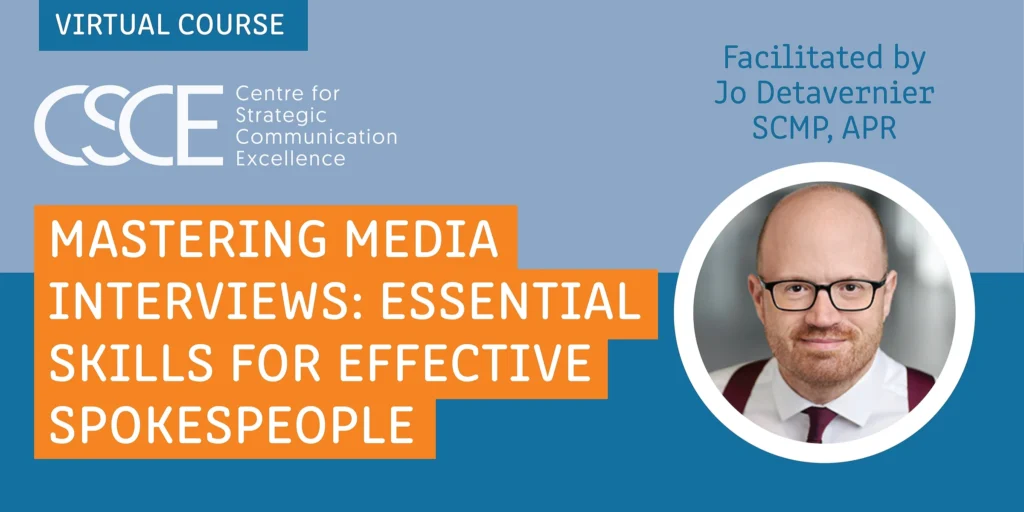Communication is like oxygen – it gives us life, but it can become toxic. By communicating in a positive way, and being open and honest with your audiences and stakeholders, you will provide life-giving oxygen to your people and the organisation.
The Internal Communication Playbook was developed by CSCE faculty Dr Amanda Hamilton-Attwell ABC, IABC Fellow, to help businesspeople inject energy and action into their organisation through effective communication.
She wanted to create a practical resource that people at all levels could use as a go-to communication guide to help them experience communication as a powerful force in business; a force that ignites ideas, strengthens teams and grows businesses. Here’s a summary of what you’ll find in the playbook.
The basic game rules
You can only achieve three things with communication. That is to provide information that will create or change:
- knowledge and understanding
- emotions and attitudes
- behaviour
Before you embark on any communication intervention you need to decide what it is you want to achieve. You need to know what you want people to know, think and feel, and do, as a result of your communication intervention.
Know your target audiences
The best way to define your target audience is to build a persona or avatar of the people in this group. The persona should define their characteristics such as age, education, job level, nature of their work environment and how they typically communicate. The next time you prepare a message, ask yourself if your persona will value the message and be able to understand it.
The content of your messages
Be clear and concise. Avoid ambiguity and delete any unnecessary words that don’t add value. For example, don’t say: “during the course of”. Say: “during”. Write like a person, not an institution. For example, don’t’ say: “Further notification will follow”. Say “I will keep you informed”.
Interpersonal communication
The playbook covers all aspects of interpersonal communication including how to: engage people; understand listener behaviour; talk to people so they will listen; communicate the right information; and deal with conflict and the various nuances.
Listening is difficult
This applies whether you’re speaking at a conference, making a presentation at a meeting or when speaking to your team. The fact that people look at you does not mean they are listening to you. When people are actively listening, their faces will show emotion, heads will nod, and they will lean slightly forward.
FACT: the audience will hear 30% of what you say and remember 30% of what they hear.
TIP: start and close with a summary of the elements you are going to, or have covered.
How to talk so people will listen
The way you “tell” your story determines whether people will listen to it. Know the purpose of your story and create common ground. Personalise and present it as if to an individual – even if it is a group. Use the right tone of voice and the right body language for the situation and the story. Encourage your listeners to become part of your story by asking questions. And, have a definite end to your story.
Handling tough conversations with grace
Nobody likes to have these conversations, but if you must, consider using these suggestions to make it easier:
- Use the word “and” not “but” – a “but” acts like an eraser in people’s heads and will negate everything you said before you said “but”.
- Use “I” messages, not “you” messages. For example, “I heard you say that,” or “I felt you were talking down to me.” When you use “you” messages people tend to become defensive and aggressive.
Communication channels
Think of communication channels as a transport network within your organisation. An effective transport network needs different types of vehicles to move different kinds of freight from point A to point B. The vehicle you use will be determined by the nature of the freight, and the distance and speed at which it has to be delivered.
Emails are part of business, use them effectively
People often complain that they get too many emails and many boast about the number of unread emails in their inbox. Unread emails are a stressor without people realising it.
Principles when sending an email:
To: Be very specific. People look at who the message was sent to and if it is to every person and their dog, they will not take it seriously.
Subject line: This will have the most significant impact on whether the email will be read or not .
- Use a newspaper headline style to indicate what it is about: Agenda for the budget meeting.
- Include a verb to indicate what you want people to do: Approve the attached report.
- Indicate the response required: Return approved document by close of business tomorrow (give the date).
The actual message: Keep it short. No more than 11 words in a sentence, no more than three sentences in a paragraph, no more than three paragraphs.
- Use a journalistic style – put the most important information in the first paragraph and expand in the next two.
- Use headings and bullets; it makes it easier to read.
- End your message with the action that must be taken and by when.
Meetings – they’re essential for running a successful business
Effective meetings are the backbone of any organisation. The following may sound rudimentary but it’s amazing how often it doesn’t occur. Before arranging a meeting, you need to know what you want to get out of it! Prepare for it, have an agenda which contains the process steps you’ll require to achieve the objective of your meeting.
To improve the outcome of the meeting, encourage dialogue by asking open ended questions. It’s important to show empathy, acknowledging other points of view and encourage quiet people to join the discussion by calling them by name.
And finally, build consensus by summarising what you hear the group saying and test a conclusion with the person most likely to disagree with it. Gain commitment by summarising the agreed-upon course of action, defining the next steps and use close-ended questions to confirm accountabilities.
Communication skills for specific situations
There are only three things that can be predicted for certainty – death, taxes and change. Here are some helpful hints to handle change communication:
- Call a meeting and indicate that it will deal with a change to the business strategy.
- Make sure you have, and understand, the relevant information. Change difficult words into words you would typically use. If possible, write it down or use a projector to allow people to read what you are saying.
- Make a positive and assertive impression. Get people’s attention before starting your presentation by stating in one sentence what the change entails and how it will impact them; give people a timeframe for the change; provide more detail about the change; allow questions; and set a date for the next meeting. Then put the written brief somewhere where people can see it.
Above all when delivering bad news ditch any vain attempts to spin the message. People will recognise the facts for what they are and your rosy interpretation will suggest that you are either naive or dishonest.
If you don’t measure it, you can’t manage it
Determine what you want to achieve with your communication before you start – and this holds true for all communication efforts. If the purpose of your communication is to change knowledge, attitudes, or behaviours, you should determine what the current situation is and what you want it to be at the end of the communication or intervention. The playbook includes suggestions about what to measure, how to measure it and where to find this data. In the end, measurement does not need to be expensive or time-consuming.
Number-crunching
You should conduct a thorough communication survey annually. This survey should measure all aspects of communication in your organisation. Use both qualitative and quantitative research processes.
Don’t have more than five sets of demographic information; people will be reluctant to answer if you include too many. The acid question is – what will you do with the knowledge, (e.g., the job levels of the respondents) when you have it? If it does not impact on the way you communicate, don’t include it.
Once you’ve processed the data look for the outliers – the highest and the lowest groups on the overall average, i.e., the overall communication effectiveness score. Then examine the data and determine what the highest ones were most positive about and the negative ones most negative about and try to determine why. Then look for trends in your data to help tell the story.
This is just a snapshot of what the playbook covers. You can purchase the Internal Communication Playbook for $AUD 19.99.





